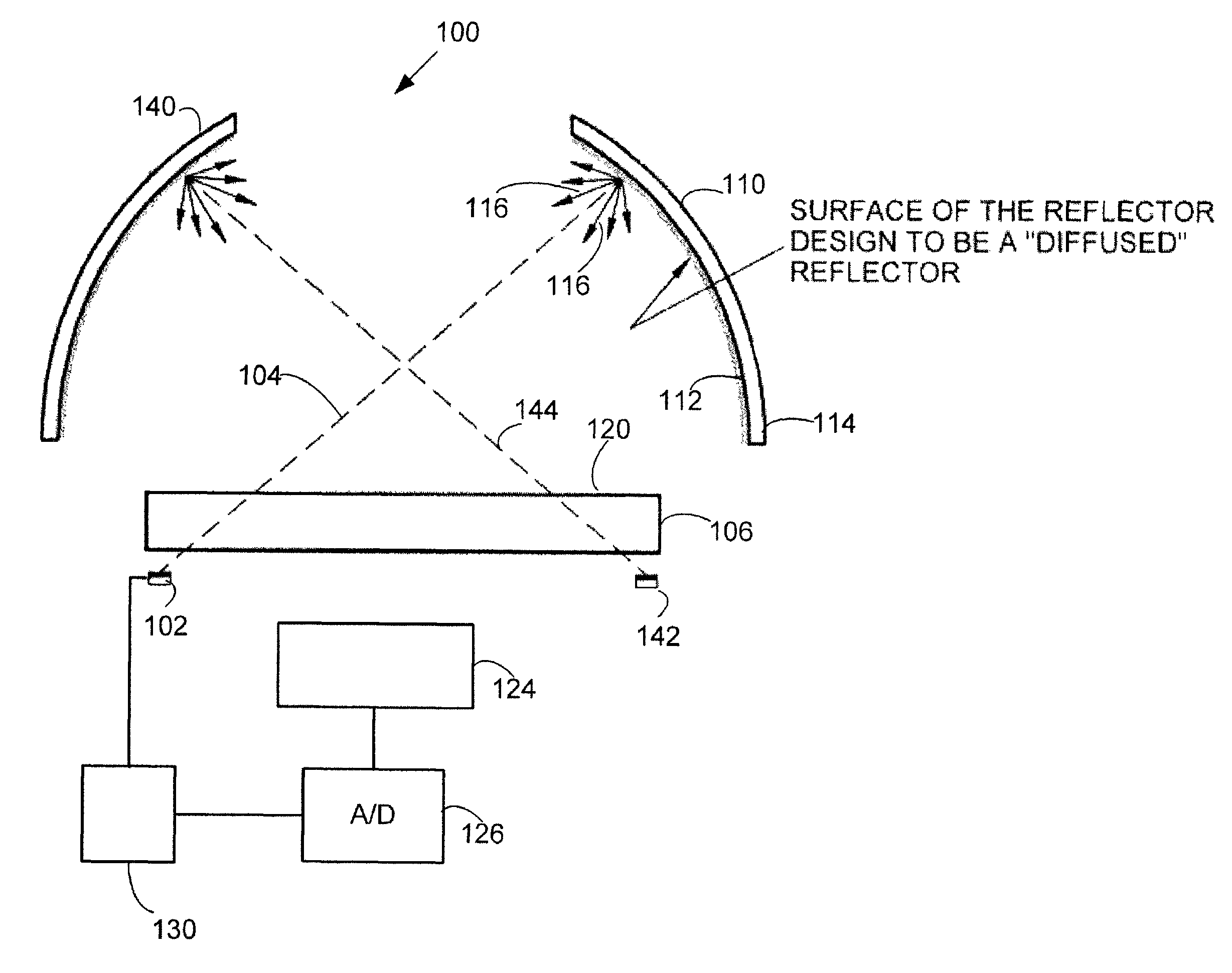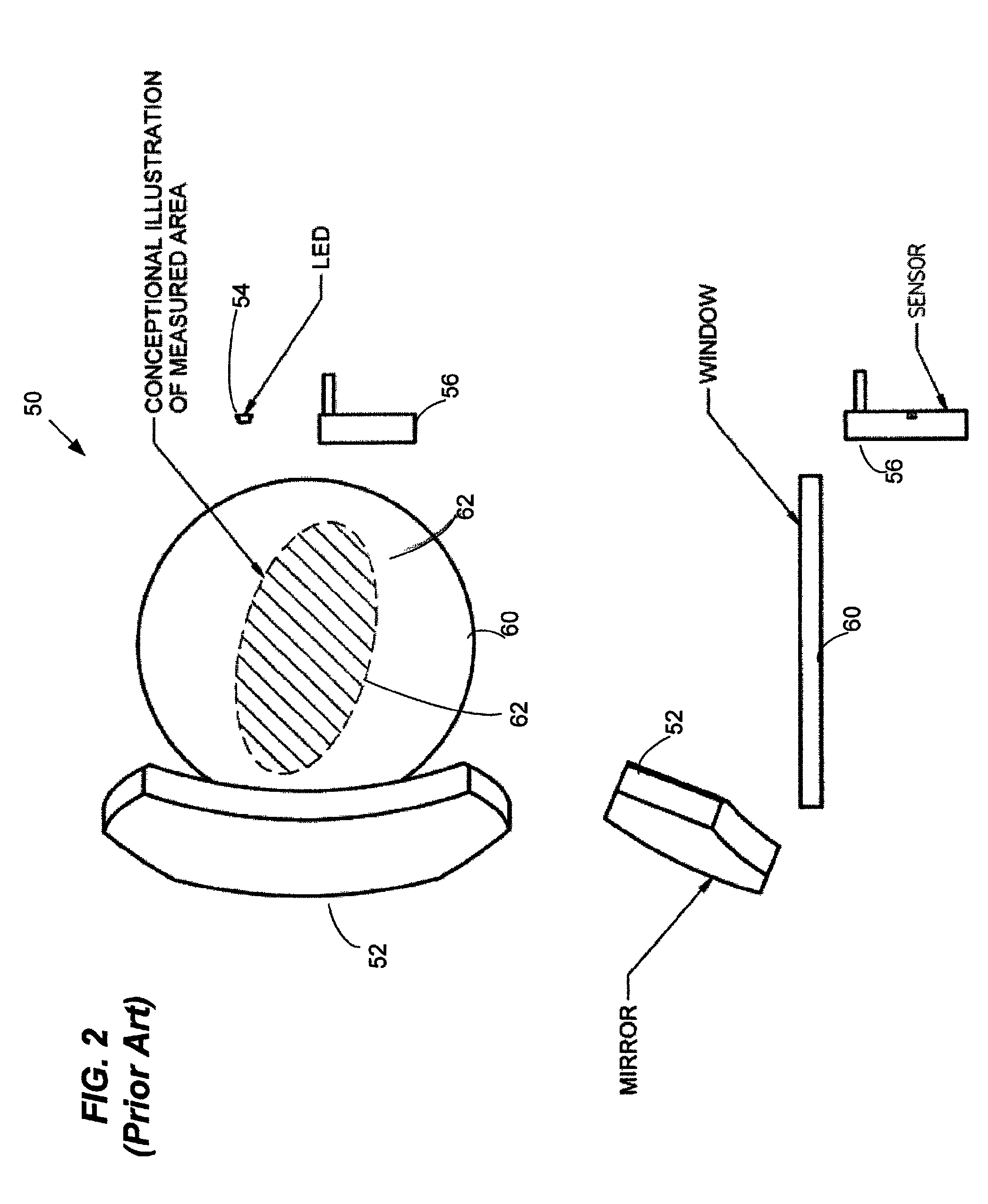Optical multiwavelength window contamination monitor for optical control sensors and systems
a technology of optical control sensors and optical control sensors, applied in the field of optical instruments, can solve the problems of not only compromising the functional performance of optical instruments, but also impact, and instruments may yield inaccurate readings, etc., to achieve the effect of reducing the impact of the following factors
- Summary
- Abstract
- Description
- Claims
- Application Information
AI Technical Summary
Benefits of technology
Problems solved by technology
Method used
Image
Examples
Embodiment Construction
[0031]FIG. 1 is a schematic representation of an optical instrument or measuring device 10 remotely measuring the temperature of a body 12. The device 10 contains a housing 14, a transmissive pane or window 16 with a first (external) side 18 and a second (internal) side 20, and a light detector 22. Additionally, a controller 24 may be disposed inside the housing 14. In operation, the optical measuring device 10 detects electromagnetic radiation emanating from the body 12. More specifically, the detector 22 may generate a voltage signal indicative of the intensity of incident electromagnetic radiation and propagate the voltage signal to a processing unit such as the controller 24. However, the controller may be disposed outside the housing 14 and be communicatively coupled to the device 10 in a conventional way, such as via a copper wire, for example.
[0032]Under certain operating conditions, dust, debris, and other foreign particles may accumulate on the external side 18 of the windo...
PUM
| Property | Measurement | Unit |
|---|---|---|
| wavelengths | aaaaa | aaaaa |
| wavelengths | aaaaa | aaaaa |
| wavelengths | aaaaa | aaaaa |
Abstract
Description
Claims
Application Information
 Login to View More
Login to View More - R&D
- Intellectual Property
- Life Sciences
- Materials
- Tech Scout
- Unparalleled Data Quality
- Higher Quality Content
- 60% Fewer Hallucinations
Browse by: Latest US Patents, China's latest patents, Technical Efficacy Thesaurus, Application Domain, Technology Topic, Popular Technical Reports.
© 2025 PatSnap. All rights reserved.Legal|Privacy policy|Modern Slavery Act Transparency Statement|Sitemap|About US| Contact US: help@patsnap.com



